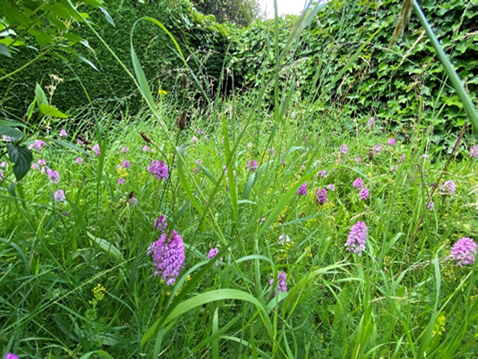

Tower and Town, June 2024 (view the full edition) (view the full edition)The Resilience Of Plants or How Less Can Be MoreIn the 1940s six acres were carved out of farmland on the downs above Aldbourne and two homes were built. In 1984 we purchased one with approximately half an acre of land. With busy working lives, we intervened very little in the structure of the garden leaving pine trees planted in the 1940s at the front of the house, a Leylandii hedge boundary, a concrete drive and the remainder which was lawn with a large pond to the rear in place. We developed a few borders in the main garden behind the house to give us something beautiful to look at and planted a mixture of bulbs to one side of the drive which looked after themselves. Once we retired the mowing regime remained until we decided it was boring and a waste of time! From about 2010 we ceased mowing apart from paths connecting with the borders and pond. To the rear we sowed yellow rattle which parasitises grass and is widely used to create spaces for wildflowers. Like the bulbs, rattle looks after itself once established. To the front we did nothing. The transformation has been extraordinary. Land farmed for at least a hundred years and given over to conventional management for decades has changed remarkably in a relatively short time. The first plants to colonise were cowslips and oxeye daisies then others such as stitchwort, clover and primroses popped up. The biggest surprise over the last five years has been the appearance of orchids in both parts of the garden but especially in the front garden where hundreds appeared last summer. These are native to chalk downland and somehow have managed to survive and reappear. And, although we hadn't introduced yellow rattle there, it has colonised small areas and other plants,; this spring especially primroses are settling in all without any prompting. The result of our relaxed gardening regime is colourful meadows from spring all through summer. We now hope that year on year the mix will continue to change with increasing numbers of orchids testament to the survival powers of plants.  Pyramid Orchids in Grass by Lesley Andrews Lesley Andrews |